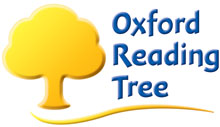Listening to natural conversations online -the best website I have found
I have been a fan of Elllo.org for quite some time. It is a free website that allows visitors to listen to dialogues on a variety of subjects. There are several reasons why I like it so much:
1. You don’t need to register
This makes it incredibly easy to use with students, and to recommend to students, because you don’t have to walk them through a registration process or deal with personal information worries.
2. Incredible variety
The site has over 1,000 conversations at time of writing, and more are added on a regular basis. The range of topics is incredible, and many of them are genuinely interesting.
3. Different accents and Englishes
Elllo has a huge variety of accents represented in its content. This is extremely useful to my students, as they mostly have only encountered North American, British, and Japanese English. Given that most conversations in English now take place between non-native speakers, it is clear that getting used to different varieties of English is a necessary part of preparing to be a user of English in the future.
4. Natural Conversation
The conversations appear to be largely unscripted, as they show features of spoken English (false starts, ungrammatical features, etc.). This makes them much more useful than most materials, which still tend to be read from a script.
5. Full Transcripts
The site provides transcripts for all the conversations that can be hidden or shown as necessary.
6. Complementary exercises
The site also includes follow-up exercises for each conversation, including vocabulary work, comprehension questions, and a very interesting speaking practice section.
7. Downloads
Students can also download all the conversations as mp3 files to listen to on portable devices.
Basically Elllo.org provides almost everything my students need to seriously increase their listening ability in casual contexts. I recommend it to all my classes, as it only takes about five minutes to showcase how and why to use it, and for a motivated student it could make all the difference.
The Oxford Reading Tree
 I am very interested in teaching English to children, and spend a lot of time thinking about how to possibly do it in a more efficient way. At the English school I advise, Cambridge English, we have a strong phonics and reading program.
I am very interested in teaching English to children, and spend a lot of time thinking about how to possibly do it in a more efficient way. At the English school I advise, Cambridge English, we have a strong phonics and reading program.
I love reading, and I am a strong believer in the power of reading to allow students to absorb language (I am a Krashenite at heart). It is my goal to allow my students to start reading in English, to encourage them to continue, and to empower them to become confident and voracious readers after they finish at our school.
In order for that to happen, students need a strong foundation of systematic phonics instruction, phonetically decodable reading material to start with, and interesting material to fuel the flame once they get used to reading words and sentences.
The Oxford Reading Tree provides the third ingredient above. I was originally introduced to the series by a colleague who used it with his own children and students, and quickly came to love the characters, the pictures, the humour, and above all, the warmth of the series. The ORT is not phonically decodable (although it has phonics-based components among its 500+ books), so it is less suitable than other series (such as Jelly and Bean) for absolute beginner readers. However, the strong stories and characters make it perfect for students who are starting to read for pleasure.
We use the ORT in three ways at Cambridge English:
1. Story Time
The teacher will read a book to the students, helping with unfamiliar vocabulary, asking questions about the story and the pictures, and asking students to predict what will happen.
2. Free Reading in Class
Students are given reading time (normally 5-10 minutes), during which they can choose any book of a suitable level to read. They read independently, and record basic information about each book they read as they finish them.
3. Reading Homework
Students borrow books to read at home, either in a structured manner where the books are assigned and students are supposed to read to their parents, or a freer style more like the in-class reading above.
The ORT has clearly defined levels which make it easy to see which books students should be reading, and our school has several sets of the trunk stories (the fiction ones with Biff, Chip, Kipper, etc.) so we have the option to let some students borrow books while others read in class.
As you can probably tell, I love the ORT stories myself (I find the materials that work best for me are the ones I actually like, as I find it much easier to be enthusiastic about them), so I was delighted when Oxford University Press Japan asked me to present about it at the ETJ Expos. I did one presentation in Sendai on the 3rd of October, and I’ll be doing another one in Tokyo on the 7th of November, at the Tokyo ETJ Expo. I’ll be talking more in depth about why reading is so important for Japanese students, and about how parents, teachers, and school administrators can use the ORT to strengthen English skills and programs.
I hope some of you can make it, it should be a great weekend.
The Archive
Sounds like something out of the Matrix, doesn’t it?
The content from my old blog will be migrated over here gradually (if/when I have time). In the meantime, if you are looking for it, you can find it here.
Goodbye blogspot
After many years together, I am leaving blogspot. I have set up house with WordPress at sendaiben.org, and we hope to be very happy together. Please come and see us!
hello WordPress
Well, I am joining the ranks of the big boys I guess, by installing WP.
